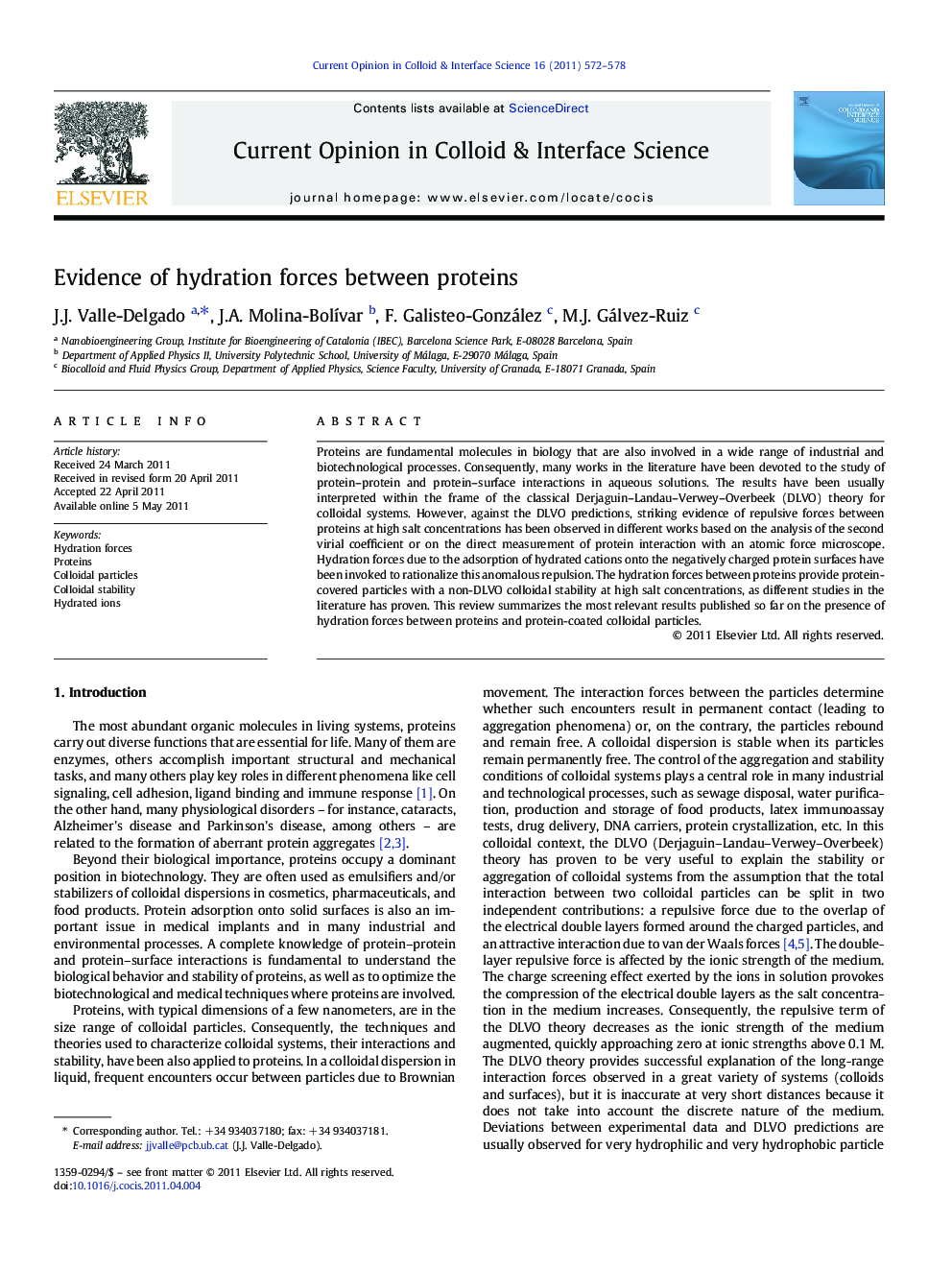| کد مقاله | کد نشریه | سال انتشار | مقاله انگلیسی | نسخه تمام متن |
|---|---|---|---|---|
| 603302 | 880204 | 2011 | 7 صفحه PDF | دانلود رایگان |

Proteins are fundamental molecules in biology that are also involved in a wide range of industrial and biotechnological processes. Consequently, many works in the literature have been devoted to the study of protein–protein and protein–surface interactions in aqueous solutions. The results have been usually interpreted within the frame of the classical Derjaguin–Landau–Verwey–Overbeek (DLVO) theory for colloidal systems. However, against the DLVO predictions, striking evidence of repulsive forces between proteins at high salt concentrations has been observed in different works based on the analysis of the second virial coefficient or on the direct measurement of protein interaction with an atomic force microscope. Hydration forces due to the adsorption of hydrated cations onto the negatively charged protein surfaces have been invoked to rationalize this anomalous repulsion. The hydration forces between proteins provide protein-covered particles with a non-DLVO colloidal stability at high salt concentrations, as different studies in the literature has proven. This review summarizes the most relevant results published so far on the presence of hydration forces between proteins and protein-coated colloidal particles.
Figure optionsDownload high-quality image (145 K)Download as PowerPoint slideHighlights
► Repulsive forces between proteins at high salt concentrations have been observed.
► Hydration forces due to the adsorption of hydrated cations on proteins are invoked.
► Hydration forces render protein-coated particles stable at high salt concentrations.
► Hydration forces between protein layers have been measured by atomic force microscopy.
Journal: Current Opinion in Colloid & Interface Science - Volume 16, Issue 6, December 2011, Pages 572–578